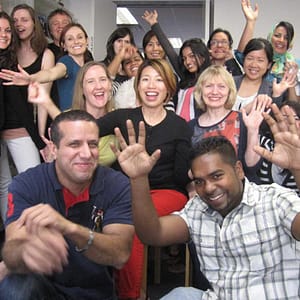Engaging a Global Workforce: Positioning Your Team For Success
Global workforces can offer companies a considerable competitive advantage. A staff built of individuals from diverse backgrounds and cultures, who speak different languages and have varied worldviews, leads to robust teams of problem solvers who bring fresh ideas and new perspectives.
The Challenges
While there are many benefits to a global workforce, managing workers around the world also presents a range of challenges. Many managers report that the cultural and communication barriers are some of the most difficult to navigate. Individuals from other cultures may have different approaches to teaming, resolving conflict, working with management, or even providing customer service. Different attitudes and approaches may lead to performance problems, weaken a team’s cohesiveness, and lower morale.
Let's Chat!
Get in touch to speak with a member of our team.
The Solutions
Cultural Competency
When managing an international workforce, cultural awareness and adaptability go a long way. Overseeing employees with varied approaches to communication, authority, conflict, and teamwork requires managers learn more about the cultural norms of each member of the team and adapt their approach as needed. This could mean changing work styles, modifying expectations, or adjusting the manner in which feedback is given. Adaptability is key to developing a meaningful connection with diverse workers in order to foster a sense of community.
Employee Resources
Building an engaged workforce and maintaining a staff that is educated in all the important facets of your business requires an assortment of HR paperwork, training materials, and other employee resources. To prepare global employees for their jobs and keep them properly informed about company processes and policies, you may need to translate these resources into the native languages of your employees.
Depending on the size and global reach of your company, this could include your employee handbook, benefit agreement, payroll documentation, workplace health and safety information, contracts, code of conduct, customer service guidelines, safety policies, and training materials. You may also want to consider the ongoing translation of corporate newsletters, company-wide announcements and presentations, and employee hotlines and surveys. These are critical components to building company culture and keeping employees informed about what’s going on in the company so they can properly represent your business and the value you offer to clients.
Utilizing Technology
Many companies with global workforces have been embracing eLearning to make online, computer-based training or assessments available to any employee worldwide with internet access. As with other company-wide materials, developing eLearning courses in your employees’ native languages can increase effectiveness. When an employee receives training in his or her native language, they have a greater chance of comprehending and applying that information.
There are, however, some pitfalls in taking a one-size fits all approach. Before crafting an e-learning module that will be utilized across cultures, it’s important to consider the end users. Individuals from different backgrounds may respond better to alternative instructional approaches. Become aware of the traditional educational structure and norms of the cultures your materials are targeting, so your resources can be tailored for maximum effectiveness. To prevent key messages from being lost, learning materials should also avoid culture-specific examples or metaphors that may be misunderstood.
Featured Services
Learn more about…
Positioned for Success
A forward-thinking company is one that addresses communication barriers, is flexible in its management approach, and works to develop an environment of trust and cooperation. Managing a strong team across geography and cultures, and keeping its members informed and educated will create a capable workforce that you can rely on to be valued advocates for your company.
At Eriksen, we are fortunate to work with many clients who are committed to developing and maintaining strong, inclusive workforces around the world. From global multimedia eLearning initiatives, to employee ethics hotlines, and international career websites – we enjoy the role we play in helping our clients attract and keep diverse talent.
 Named to the 2024 Inc. 5000 list of fastest-growing companies and ranked among the world’s top 100 language service providers by CSA Research
Named to the 2024 Inc. 5000 list of fastest-growing companies and ranked among the world’s top 100 language service providers by CSA Research

